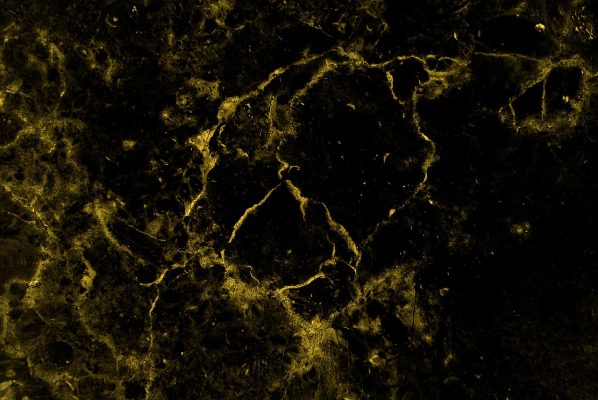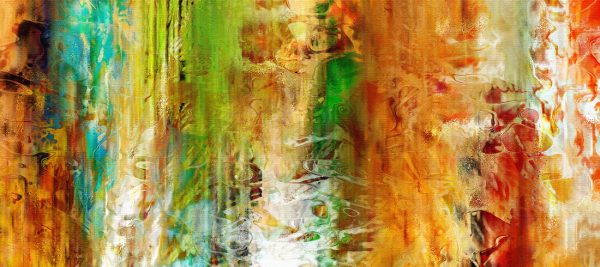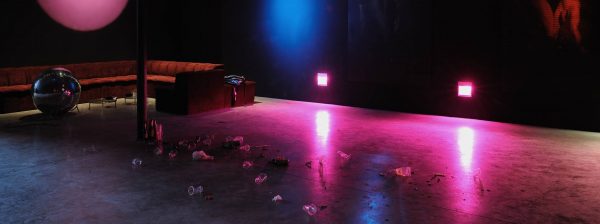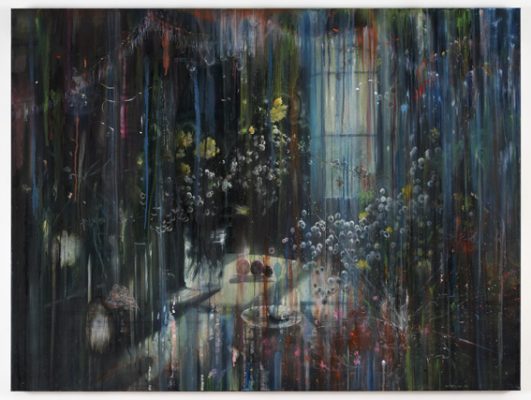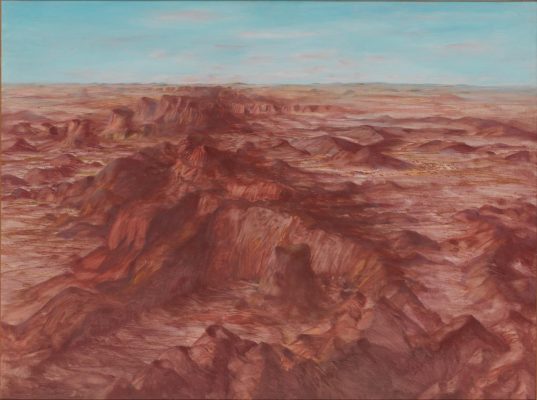In 2013, when Jane Campion’s Top of the Lake first aired, I tried but failed to watch it. In the first episode, detective Robin Griffin is visiting her hometown in New Zealand, and begins investigating the case of a pregnant twelve-year-old girl, Tui, who has tried to end her own life. Robin visits the girl’s father in his remote hilltop house, suspecting him, amongst others, of having raped Tui. When she started to talk to the intimidating, unpleasant man, I had to turn it off. I couldn’t stomach another TV programme about brutalised girls. I couldn’t bear holding out to see if the sexual abuse might be treated in a way that wasn’t titillating or voyeuristic.
I was wrong to switch off. Watching the series properly this year, I was struck by how Campion confronted such painful possibilities — the systematically orchestrated abuse of teenage girls, horribly familiar in recent months from the Jeffrey Epstein case — without colluding in the girls’ mistreatment, without indulging in false, salivating piety. Tui’s sufferings are conveyed without robbing her of her dignity, and the legacy of Robin’s own sexual trauma at the hands of brutal young men is compassionately and respectfully portrayed too.
It’s a tricky thing to pull off. Part of what we invoke when we rail against the exploitation of women and girls is their vulnerability; their vulnerability to those with greater physical, social, cultural power — usually men. But that vulnerability is also what is fetishised in the sexual predation of girls itself; innocence, pliability and breakability are alluring to abusers, and not for nothing is the virgin trope so ubiquitous. The association of youth with vulnerability and cuteness is fraught. Cultural theorist Sianne Ngai has argued, in her analysis of ‘cute’ aesthetics in the context of toys and art objects, that ‘cuteness’ — associated with frailty, roundness, softness — can provoke ‘ugly or aggressive feelings, as well as the expected tender or maternal ones’; the cute object, she writes, ‘is as often intended to excite a consumer’s sadistic desires for mastery and control as much as his or her desire to cuddle’, and ‘objects get cuter when perceived as injured or disabled’. What’s more, the idealisation of innocence is often the rationalisation for self-congratulatory but prurient portrayals of sexual abuse. A focus on youthfulness enables a disregard for older (more guilty?) victims of violence, while innocence is itself racialised — the young, white girl gets the most coverage in sexual violence reporting, as well as being the idealised form of feminine beauty.
How does Campion avoid all these pitfalls? She undermines the seductive binaries of guilt versus innocence, of woman versus child, or youth versus age. She portrays a community of women, indigenous and white, at various stages in their lives, ravaged by male violence. Young girls, young women, older women — all have their stories of dehumanisation, of violence, of disrespect. Robin, in a macho workplace, has constantly to negotiate the sexual intrusiveness of heterosexual male colleagues. Violence follows her around, and she too pursues it in her work, compelled to return to cases of victimised children. Instead of framing sexual assault as an out-of-the-blue, extraordinary event that catapults us from innocence to weariness, from joy to grief, Campion reveals it to be a persistent feature of everyday life, suffusing women’s existence like a dye through water. This may sound bleak, but an acknowledgement of the mundanity as well as the horror of sexual violence is crucial to an adequate set of responses to it. Seeing it as exceptional, as a feverish conflagration, invites excitation about it — enables, perhaps, its eroticisation.
In Top of the Lake, Campion emphasises that women have no choice but to explore and discover their lives, and indeed their sexuality, in a landscape of sexual violence — the landscape in which they grow up and live. And she had brought this sensibility to life on the screen ten years previously, in her film adaptation of Susanna Moore’s 1995 novel In The Cut. Moore, an American who grew up in Hawaii, and Campion, a New Zealander, are a match made in heaven; both unflinching in their gazes, both unafraid to look at the darkness. In The Cut, Moore’s fourth novel, is now being reissued, after having been out of a print for a while. Its narrator, Frannie, is a teacher in her thirties, living alone in New York, who becomes entangled with Malloy, a detective investigating the murder of a young woman — a redhead whom the narrator is convinced she saw giving the detective a blow-job in the basement of a bar on the night of the murder. On the novel’s first page, Frannie tells us she has considered giving her students
Naipaul to read, A Bend in the River or Guerrillas, but I decided that they would be so sensibly outraged by the beating, murdering, and dismemberment of women that they might not be able to see the intelligence in the books.
Moore, here, is foreshadowing the question at the heart of her own book: how to engage with violence against women without shutting down one’s faculties. How are we to represent, in writing, the fact that sexual desire lives entangled with sexual violence? How are we to deal, in art, with the powerful, destabilising forces of both violence and desire?
There has been much recent commentary on the fixation on sexual assault in TV, film, and even novels: the Staunch Prize was launched in 2018 by screenwriter Bridget Lawless to reward the author of a novel ‘in the thriller genre in which no woman is beaten, stalked, sexually exploited, raped or murdered’, a book in which ‘female characters don’t have to be raped before they can be empowered, or become casual collateral to pump up the plot.’ When the prize was announced, several writers protested — violence is part of life; are writers meant to eschew it? Sophie Hannah wrote that ‘if we can’t stop human beings from viciously harming one another, we need to be able to write stories in which that harm is subjected to psychological and moral scrutiny’ (and, she added, in an oddly prescriptive move, ‘punished’). Yet it is undeniable that some forms — perhaps visual forms in particular — seem to take pleasure in displaying violence done to women, in a kind of loving lingering on the spectacle of violence. The wildly popular TV series The Fall, about a serial killer and his adversary Stella — a sexually assertive feminist played by Gillian Anderson — seemed to me to do precisely that. It featured a slow build-up of appetite for Stella’s violent demise at the hands of the killer — an appetite smuggled in under the cover of dread. Fiction can explore what it is like to live in fear of violence; it can also covertly enact a wish-fulfilment for all our misogynies. There’s a difference between exploring the realities of violence, and revelling in the dangers women face. The Fall got off on women’s fear of men; it took pleasure in reminding women that they are prey. As Virginie Despentes puts it in King Kong Theory, ‘Yes, girls, we also find your corpses very hot.’
Is it possible to explore women’s position as targets of violence without indulging in this kind of sexual doublethink; without, perhaps, contributing to the problem at hand? Without congratulating oneself on exploring a difficult issue while simultaneously salivating over women’s vulnerability? This is not only a question for novelists, filmmakers, screenwriters; it is also a question for feminism itself. Feminist theorist Ann Snitow has said in a recent interview that while sexual violence is pervasive, to make fear an essential part of feminism may not be the solution:
We’re trying to clarify that violence against women is unacceptable, trying to make it visible without terrifying ourselves. Tough trick.
In her recent book Rape, Mithu Sanyal writes that ‘anti-rape activists paradoxically achieved exactly what’ feminists such as Susan Brownmiller had assumed men wanted to achieve: ‘for a significant part of the female population to live in constant fear.’ And risk scholar Rachel Hall has argued that the neoliberal emphasis on risk management that has infused rape prevention discourse from the 1980s onwards has tended to portray sexual violence as a ‘relentless force’, one which is impersonal and agent-less. Women are addressed as subjects needing to enact a ‘diligent fearfulness’, and they become, accordingly, afraid of being ‘next in line’. In ‘perpetual preparation’ for what is portrayed as the inevitable, they are required responsibly to manage a risk that is prediscursive, that simply exists, as a brute, ugly, immutable fact. For Snitow, the solution to the unhappy bind of fear lies in part in refraining from fetishing sexual violence, in resisting the temptation to make it ‘the central truth about women’s situation rather than a dynamic along with so many others, like women’s poverty, their second-class citizenship, their debilitating contact each day with sexism’. These conditions all lead to women’s vulnerability to violence, as well as to the scant resources available to protect them — resources to which women in poverty, or women in marginalised communities, have even less access. Women in immigrant communities, for example, may, in addition to fearing for themselves, fear for their community disproportionately targeted by racism, hostile policing, or immigration raids. And sex workers are subject to a discourse in which their assault is not even possible. Moreover, as many scholars have pointed out, the trope of the innocent white woman’s violation has consistently been invoked to undergird violence towards men of colour. The right wing press had a field day with the assaults of women in Cologne on New Year’s Eve in 2016 — violence towards women could be harnessed to inflammatory rhetoric surrounding the migrant crisis — and Trump regularly invokes Mexican rapists as ballast to his anti-immigration measures. Given all this, then, writers must think deeply and carefully about how the trope of sexual assault functions in a text. What work does violence against women serve in a story? What does it allow us to focus on, and what does it enable us to keep at bay?
Frannie, in In The Cut, lives alone. She spends time with her friend Pauline, who lives above a topless bar; she starts seeing Malloy, the detective investigating the redhead’s murder, and she spends time, ambivalently, with her student Cornelius, who is writing his term paper on a serial killer. Cornelius follows her after class; she stalls, tries, with wavering conviction, to keep him at arm’s length. One night, as she leaves Pauline’s apartment, Cornelius is there, waiting for her.
‘You think it’s right’, he said, ‘that chicks act the way they do, you know, like captives, ‘cause they be scared of male violence?’
He mentions that Malloy and his sidekick Rodriguez have visited his home; they know he was with Frannie at the bar on the night of the murder. She tries to get him to leave. ‘I’m going uptown with you’, he said. ‘You can’t be on the Six this time of night.’ When she gets home, someone is waiting outside her building. It’s Malloy; he wants her to get in the car, as she has before when he has questioned her about the case. She does. ‘Still getting into cars with strange men’, he says, before telling her details of a different and gory murder, of cutting a corpse’s fingers off to get prints. Like Cornelius, Malloy is increasingly
concerned about my safety. I’m not careful enough. I shouldn’t take the subway. Shouldn’t talk to strangers. Should lock the door. It would be easy to get into my apartment, he says, the way that I live.
In the novel, men repeatedly invoke women’s unsafety on the streets or in their own homes. This is true of life: the threat of violence, its ever-hovering possibility, offers grounds for men’s protection of women, but also for their access to them; for not leaving them alone, for controlling their movements and keeping them close. The fear that responsible women are urged to feel is put into service of limitations placed on women’s physical freedom — by fathers, lovers, and public opinion alike. Representing violence in culture — in film, in fiction — can also function as a way to warn women about violence, but what is the status of a warning? Who does it serve? If we think that information and awareness about sexual violence can save us, our every action and move becomes a more or less responsible management of the naturalised risk of rape. She was warned. She should have known better.
Frannie and Malloy have sex, they talk, they discuss the murder. Malloy is swaggering, sexy, macho, enigmatic, and he is an attentive, intense lover. He is also given to long, performative speeches about his life, in the manner of a troubled cop with a dark past so familiar from film noir. (Moore has said that she was reading a lot of crime and detective novels, as well as erotica, and wondered what it would be like ‘if a woman wrote a noir’; wondered, too, what it would be like to write sex well.) Frannie begins increasingly to suspect that Malloy might in fact be the killer, and becomes ever more aware too of being watched by numerous men, including an eccentric but unpredictable friend, and Malloy’s detective partner, Rodriguez. Whom should she trust? Which of the men circling her is harmless? Are they all? Are they none? And can the man who gives her the most pleasure — the book shimmers with eroticism — also be capable of causing her the most harm? How do we know which man is which, when we know there is a man who is the worst — the killer?
Early in the book, when Malloy first asks her about the bar, the murdered girl, Frannie lies about what she thinks she saw: Malloy getting a blow-job from her, and Malloy seeing her watch. Why does she lie? Is it out of shame? Of being known to have watched, been voyeuristic? Perhaps women don’t watch. Does she feel endangered by being implicated; does the possibility of her own arousal, her own desire, make her guilty of something too?
I wondered if he knew that I was the girl in the dark basement room. I wondered if, in some way that I did not understand, he was using that knowledge to presume an intimacy between us, as if we shared a secret that was exciting because it was dangerous to both of us: a woman with red hair had been on her knees with his red cock in her red mouth a few hours before having her throat cut and her arms and legs pulled from their sockets.
The unspoken, the imagined — withholding information, not being sure what is known — are erotic too. Describing Malloy’s own way of speaking about the murder, she says ‘he was both veiled and exact’, ‘selective but not averse to giving a suggestive illustration’. Not unlike her own style, and Moore’s prose, in fact. In the Cut is as much about language as it is about sex or violence. Frannie is writing a book about regional dialects. She compiles lists of New York street slang; terms for gun, penis, vagina, sex. ‘The words themselves — in their wit, exuberance, mistakenness and violence — are thrilling to me.’ She is open, too, to her own acts of voyeurism, of objectification and fetishisation, as a teacher who watches her students — many of them people of colour while she is white — just as the men watch her. Moore flags this early on, in the first few pages of the book; Cornelius says to her: ‘people like you think brothers are guinea pigs. The way we talk and shit.’ Is this a way to disarm us? Perhaps, and a way to signal the dynamics of scrutiny and fascination, that run like blood throughout the novel.
But when Frannie describes Malloy’s speech as ‘both veiled and exact’, ‘selective, but not averse to giving a suggestive illustration’, Moore is doing two things at once: describing the mechanisms of thrill and suspense in the novel — the withholding that makes writing exciting — and the mechanisms that constitute the erotic. Recounting one night of sex with Malloy, Frannie describes his hands at her opening, wetting it, and pausing: he was ‘teasing, threatening’. There are discomforting scenes. One night, Malloy says that
Whoever did this one knows all about bodies. It’s not easy to cut a throat like that…. You got to meat-cut it, like cutting up a chicken almost, you know what I’m saying? How you take the legs off a cooked chicken? Pop.
And then ‘he took my arm and held it away from my side, putting a hand between my breast and my arm. I felt as if I’d been branded.’ When she is attacked by a stranger on the way home from Pauline’s, but escapes, she calls Malloy, who comes over. They go over the attack, and re-enact it:
He came up behind me and pulled me back against him, my head against his shoulder. I took his right arm, bending in at the elbow, and laid it across my neck. I could feel his breath against the side of my face.
Like this, I said. Like this.
(…)
He let his arm fall from my neck, down across my chest, until his hand was on my breast, his fingers finding the nipple. He pulled me back against him. He had an erection. I could feel it.
“All right”, I said. “All right.”
These scenes are troubling, exciting, disturbing. In the film, too, Campion captures their aching ambivalence: the way desire can turn on a thread, the way violence shimmers into view whenever desire does. Threat and fear, Moore is noting, can be recruited to the erotic. After all, sexuality is made of the stuff of life, and life is saturated with violence, or the fear of it. She refuses to close off the fear of violence from the erotics of sex; we can never, she implies, keep the pulse of the threat at bay. In the swirl in these scenes is the conflation of sex and violence — a conflation which can infiltrate sex itself, as in the erotic dance that Malloy and Frannie are engaged in, and a conflation with which feminism must endlessly grapple. It’s naive to think that even good, consensual sex can remain untouched by sexual violence — because its possibility, and the way we talk about it, shapes our subjective life and our excitements. But it’s depressing as well as inaccurate to think that sex is always violence; that sex between men and women can’t do something transcendent and lift up out of the crucible of power relations in which it is learnt. Freedom, emancipation, grace, all hang on a thread, are never complete, and are always materially conditioned by the realities of social life.
Later, the novel’s terrible denouement unfolds — this is, after all, a thriller (though it’s a denouement that the film refuses and makes more palatable). Frannie finds a body, a body dear to her; the attacker has struck again. Malloy arrives at the scene, and later, she asks him what he saw, what he did — she wants to know the terrible details; he asks her why. ‘So I can imagine it’, she says. ‘So I can sleep.’ She wants to visualise that which she fears, that which she dreads. Do we have to find ways to imagine and then tame the thing we fear most? And when is the fear — of the attack, of the worst — our own fear, and when is it someone else’s fantasy? Perhaps we have to dwell on the worst in order to keep it at bay; to imagine it in order to will it away, to pre-empt it and ward it off. No wonder sex becomes psychically contaminated with violence.
Before the novel’s shocking end, Malloy tells Frannie about a phrase that she then notes down in her lists: ‘in the cut’. A phrase used by gamblers, it comes from ‘vagina’, and it means, he tells her, ‘a place to hide. To hedge your bet. But someplace safe, someplace free from harm.’ Safe for whom? That we even think of a vagina as a cut speaks to the violence with which sex is endlessly associated. Frannie’s erotic life hangs on the tightrope of pleasure taken in vulnerability and yielding, and fear of the very same. One night, she and Malloy have sex in his office; he bends her over and handcuffs her, and puts his fingers in her anus.
‘What are you doing?’ I whispered. Even though I knew. It was as if I had to pretend that I did not know what he was about to do to me. Opening what was closed. Insisting. Fixing me. Unsealing me. At last. I who did not wish to belong to one man. I who did not wish to belong to anyone. I did not want to be fixed, to be held down, the closed opened, the heart broken.
And yet, she then immediately tells us,
I wanted to be fixed, to be held down. Opened. The old longing to be chosen, pursued, fought for, called away.
She has to pretend — to others, to herself — that she knows less about her desire than she does. And yet, it is also true that she does not know her desire, because it never settles, and because she wrestles with her fear. She both wants and doesn’t want to be fixed in place by sex. In The Cut is, like the film, deeply, achingly erotic; not in spite of, but because of its acknowledgement that violence hovers all around. Sex, if we are lucky, is not just hot; it also touches on our deepest fears, our deepest pains. This is the quandary: desire unfolds within a landscape of violence. It sometimes, as a consequence, partakes of violence’s tropes; the two can blur. Reading In The Cut, and watching the film too, I felt such relief — to have the pleasure of sex acknowledged, and to have its terrors laid bare; to read a writer for whom one is not pitted against the other in a depiction of sexual life, or separated out into different realms — for whom the two must be accorded their psychological significance. Fear infiltrates our desires, and has to be managed, manipulated, interacted with. That a realm of such potential joy — the encounter of two bodies, of two persons — can be a realm of such terror too can only produce ambivalence. In the Cut is a thriller, and it is laced with fantasy. But it’s horribly, beautifully real.
